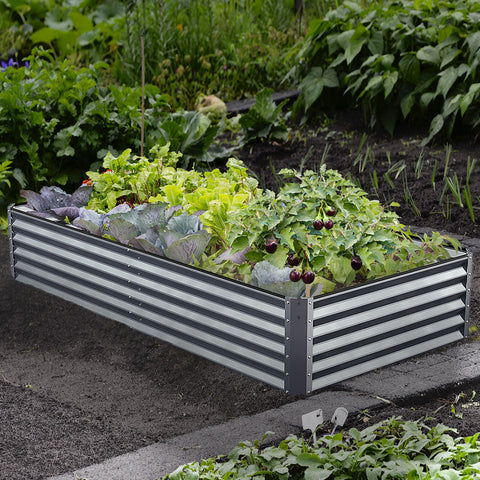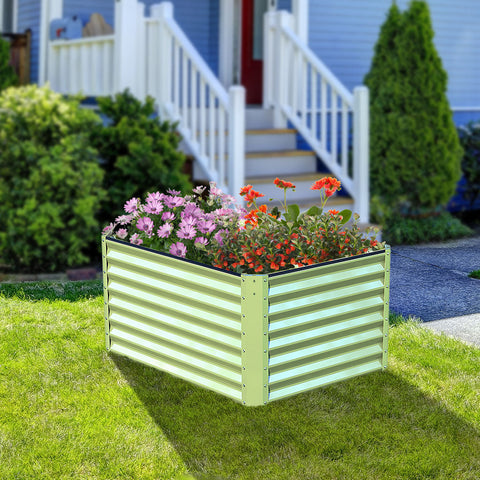Plant these colorful annual plants in flower beds, borders, and containers in the garden.The following content also has some reference value for raised garden beds.
African daisy is a tough annual plant native to South Africa. These plants have silver gray leaves that perfectly set off their colorful flowers. In a mild climate, flowers can last for a long time. The flower is composed of a bright outer layer of petals, with bright colors and a small "eye" in the center. The eyes of African daisies can come in several different colors, usually brown, gold, pink, or green. Plants in zones 9-11 are cold tolerant.
African daisies can grow well in containers. They like ample sunlight and well drained soil. When deciding where to plant African daisies, remember that their flowers are very close at night. On cloudy or harsh weather, flowers sometimes do not fully bloom. Therefore, if your planting area is mainly used at night, find a substitute that can be better enjoyed after dark.
How and when to plant African daisies
Planting in the spring after the last winter frost. Dig a hole as deep as your nursery container. Remove the plants from the pot and loosen the soil around the roots. Place into the hole, backfill with soil, lightly compact and water. African daisies should be planted 12 inches apart, as they can grow up to 1 to 3 feet tall and 2 to 3 feet wide. They usually bloom within 2 months after planting.
Due to the fact that African daisies can wilt in high temperatures or harsh weather, plant them together with other flowers to make your garden colorful.
Due to the fact that these plants come from the sandy and rocky regions of South Africa, African daisies require well drained soil to perform their best. However, this does not mean that they prefer to stay too hot and dry. In fact, the climate they like is usually very mild.
African daisies thrive in ample sunlight, and if there is too much shade, they will not bloom so vigorously.
African daisies are quite drought resistant. However, in order to achieve optimal growth, they require 1 inch of rainwater or irrigation per week. Keep the soil continuously moist, well drained, and with a pH of 5 or 5.5. Add compost to the soil before planting.
Be careful not to water too much, as damp soil often leads to root rot. If the weather gets hot or dry, African daisies may stop growing. Additional water should solve this problem.
When growing in hot summer areas, African daisies pause their flowering and focus on surviving the high temperatures of the summer. Once the weather starts to cool down, they will resume flowering and continue until frost. If you plan to use African daisies in your garden, consider them as a cool season to bloom.
According to the manufacturer's instructions, apply balanced fertilizer every month to maintain good nutrition for African daisies. Potted plants may require more frequent feeding.
In order for African daisies to bloom throughout the season, old flowers can be removed from the plants. This will help encourage new growth and allow plants to bloom for a longer time. If plants become leggy, cut them off.
Potting and replanting African daisies
Plant African daisies in flower pots with good drainage holes. A well drained sealing mixture is necessary. Plan to water plants more frequently than in the garden. Place African daisies in a sunny area. Potted African daisies may require more frequent fertilization as nutrients can leak out with water.
Apart from common garden pests, African daisies have almost no problems. As summer warms, their sensitivity to heat is worth noting.
Due to the fact that many African daisies are hybrid species, collecting seeds is not the best way to obtain new plants next year. However, these plants are easily propagated through cuttings.
In late autumn, before the first frost, use a sharp bypass trimmer to trim cuttings 3 to 5 inches long, with at least two sets of leaf nodes. Choose non flowering stems or cut off flower buds. Cut the leaves from the bottom half and immerse the ends in rooting hormones. Insert the slice into a plane filled with the seed starting mixture.
Cover the apartment with a plastic dome and place it in bright indirect light at temperatures between 60 º F and 68 º F. Rooting should take place within four to six weeks. Transplant the seedlings into a separate flowerpot filled with a potted mixture. After the last spring frost, plant them outdoors.
Types of African daisies
Pink Sugar African Daisy
Arctotis' Pink Sugar 'features pink and orange sunset tones and silver leaves. Expect it to bloom hundreds of flowers throughout the entire season. It grows 14 inches tall and 10 inches wide.
The Ravers Hearts and Tarts African Daisy
Arctotis "The Ravers Hearts and Tarts" has gray green leaves and orange and pink flowers. It grows 12 inches tall and 16 inches wide.
The companion plant of African daisies
Angelonia
Angelonia's flower tips reach one or two feet high, adorned with goldfish like flowers, with beautiful colors of purple, white, or pink. Throughout the summer, it blooms in hot and sunny places.
Pink carnation
The pink pink carnation has grassy blue-green leaves and abundant star shaped flowers, usually emitting a spicy aroma. Flowers appear in spring or summer, usually pink, red, white, rose or lavender. There are a wide variety of plants, from tiny creeping ground cover plants to 30 inch high cut flowers, all of which are the favorites of flower shops.









